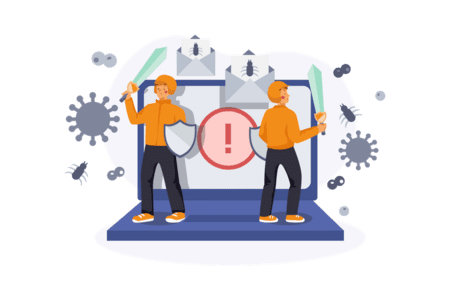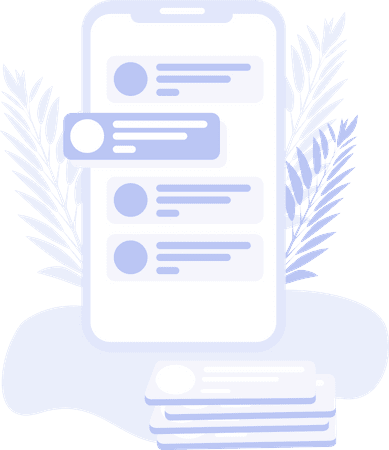Do you think your email marketing is tiring and not getting the necessary results? It is obvious you are doing it the wrong way. Research shows that email marketing is the best way to connect with customers.
It is estimated that for every $1 spent on email marketing, the average return is $44.25. That’s a pretty good return on investment.
To create an effective email marketing campaign, it’s important to understand the basics of email design, how to write effective copy, and what makes a good call-to-action. Once you understand these concepts, you can implement them into your email marketing strategy.
Over the years, I’ve performed serious email marketing research—snooping on competitors’ email campaigns, double-checking privacy policies, comparing email service providers…you name it! And now you can reap the benefits of my labor by reading this guide packed with actionable best practices that’ll help you craft amazing emails your subscribers love.
Email marketing is one of the most effective ways to reach your target audience and generate leads. However, if you want to see success with email marketing, you need to do it correctly.
There are a few best practices you should follow when it comes to email marketing. Here are a few tips to help you get started. These will help you connect with them better and increase your chances of converting them into customers. So, if you are willing to make sure your email marketing is effective, read on and implement these practices.
1. Segment your contacts

Know-how: Not all of your contacts are the same, so why would you send them all the same email? Segmenting your contacts allows you to target them with specific content that appeals to them.
You can segment by demographics (location, age, gender), interests (what they have purchased from you in the past), or even their stage in the buying process (new leads vs current customers).
How to implement: You can use many tools to segment your contacts. You can use an email service provider’s built-in tools, a CRM tool if you’re using one, or a standalone tool for segmentation.
Correspondence analysis will help with complex variables analysis and pattern discovery. Chaid analysis will help you discover demographic relationship patterns in your list to help you segment properly.
2.Pick the right sender name

Know-how: By default, your “from” name will be the name associated with the email address you send from. If you want people to click on your emails and take action, pick a sender name to convince them to open it.
How to implement: A sender name isn’t as important as an email subject line or content, but it can still impact.
Your sender name should match your brand identity, so if you’re known for being friendly and helpful, use a sender name like “John from ABC Company”. Or, if you’re more formal and serious, use something like “Sales Department”.
3. Perfect your subject lines

Know-how: Your subject line is more important than most marketers realize because it’s your subscriber’s first impression of what you have to offer. That means you have to be clear about the value your subscribers will receive by opening your email. If they’re not convinced immediately, you can forget about getting them to click through.
How to implement: Always test different subject lines to see the best open rates. You need to keep your subject lines short and sweet. No more than 50 characters less is better.
Also, make sure your subject line accurately reflects the content of your email. You are permitted to use emojis sparingly, as they can be boring or off-putting to some subscribers.
If you’re looking for a way to craft the perfect subject line for your email campaign, consider using an AI copywriting tool. I’ve had great success with Jasper AI, which not only helps me to save time but also produces high-quality results.
So if you’re looking for a reliable and efficient way to create attention-grabbing subject lines, be sure to check out Jasper.ai. You won’t regret it.
4.Make it easy for readers to reply

Know-how: People want to contact you if they have questions or concerns, so give them several options for contacting you. Avoid the no-reply email address, and make sure your reply-to address is one they can easily remember.
How to implement: Your email should include big, easy-to-find buttons that let readers get in touch with your company no matter where they are. Add links to your landing page or product.
If your button is hard to find, people will forget about it or assume it’s not there. You can also use a one-click message system that lets people send direct feedback by clicking the email subject line.
Also, adding social sharing features makes users’ lives easier and gives your brand more visibility by connecting it to other sites.
5. Personalize your email content

Know-how: Adding personalization to your emails can help increase click-through rates and boost conversions from your email campaigns. Personalized experiences are more memorable for customers, leaving you with a greater chance of making a sale or upselling an existing customer.
Personalization shows people that you care about them and are putting thought into your emails. It also helps improve open rates because personalized emails stand out from others in their inboxes.
How to implement: With the right tools, you can make it easy to add elements of personalization to your emails by inserting the recipient’s first name into subject lines and campaign text. Tools like HubSpot, Segment, etc., make this process easier by allowing you to import lists and contacts directly into their interface.
Additionally, Magento allows admins to add customer information to show personalized product recommendations when viewing items in the admin panel.
Use dynamic content fields like “first name” or “company name” in your emails so that each contact’s details will automatically be added.
But don’t stop there–try to personalize other things, too. If you can change the sender name to read “John from Acme Company” instead of just “Acme Company”.
6. Don’t send too many emails–ever

Know-how: Spamming your contacts is not going to get you good results. It will have the opposite effect and send your open rates plummeting. Sending too many emails can quickly increase unsubscribe rates and hurt your sender’s reputation.
How to implement: Don’t send more than one or at most two emails per month to contact who you are not familiar with. If someone opens two of your emails within a month weeks, wait until at least two weeks have passed before sending them another email.
Your email isn’t the only task they want to accomplish. You need to be sure they will read it. If you share meaningful content, you can always wait for two weeks before sharing the next as they will be willing and eager to have more from you.
7. Don’t sell; tell stories

Know-how: People don’t want to be sold all day long. They want valuable information that helps them solve their problems, grow their business, or improve their lives. And they’re more likely to connect with your content if it feels human and isn’t full of marketing fluff.
How to implement: Share helpful tips based on your contacts’ interests or needs based on what you know about them. Make sure you deliver this content in a non-promotional way, so it feels like a good friend is sharing a helpful tip.
You can also tell your company or employees stories to show people that you’re human and not just a faceless corporation.
8. Keep the design clean and simple

Know-how: Busy designs may look nice, but they’re hard for people to read, making their visit less valuable. Keep things focused on what matters–the content–and make sure it’s easy to scan and navigate.
How to implement: Streamline your design using a simple layout and fonts. Stick to a limited color scheme, and use whitespace to help break up the content. Keep your CTA buttons big and easy to spot, and make sure all of your links are clearly labeled.
9. Pick your content carefully and professionally

Know-how: Create content relevant to your audience and that they will find useful. Don’t just send them a sales pitch – that’s not what they want or expect from you. Make your prospect believe you understand their pain, and you can solve them magically and not just junk; they can ask Google easily.
How to implement: Again, it’s important to know your audience and what interests them. Try to think about what types of content would be most useful to them and then create emails around those topics. You can also survey your contacts to find out what type of content they would like to see from you.
10. Make sure your emails are mobile devices friendly

Know-how: A growing number of people are reading their emails on their mobile devices, so your emails must be mobile-friendly. If they’re not, you run the risk of having them marked as spam and missing out on a large portion of your audience.
How to implement: This is another area where segmenting comes in handy. Some of your contacts may be viewing their emails on mobile devices, so you’ll want to send them an email that looks good on a mobile device.
You can add code or content such as image links only when accessing the email has a desktop browser. This will ensure that they’re not wasting time trying to load something that won’t display properly on their phone or tablet.
Make sure you preview how your email will look when sent from different devices, pick up any glitches before it goes live, and always use responsive design templates.
11. Proper timing

Know-how: When you send your email is just as important as what you send. Sending emails when people aren’t checking their inboxes won’t get you the best results. Think about when your recipients are most likely to open an email – chances are it’s during business hours or maybe on the weekend if they work in a corporate setting.
How to implement: If you’re using an ESP, look at their data. Most ESPs have reporting that will show you when your email opens and clicks happen, giving you some basic insight into when your contacts are opening up their emails.
You can also use free tools like Mailtrack to see when your contacts are reading your emails. With Segment, you can schedule the time to send based on time zones, so everyone opens.
12. Test and track your results

Know-how: One of the best ways to keep track of your email marketing efforts is to test and track results. That way, you can learn what works and what doesn’t, then use those learnings to inform future campaigns.
How to implement: There are several great tools available that give you access to powerful A/B testing capabilities and the ability to see how your campaigns are performing over time.
Most email service providers offer this kind of functionality within their core platform. Still, standalone tools like HubSpot, Segment, etc., also make it easy for marketers to create and manage multi-channel marketing campaigns – including email and beyond.
13. Include an effective call-to-action (CTA)

Know-how: Compelling CTA’s are integral to the success of your email campaign. They are responsible for helping you turn readers into customers. A strong CTA can help increase customer engagement, improve conversion rates, and build brand loyalty among subscribers.
How to implement: There are many ways to approach CTAs in your emails. You can use text links, buttons, images – if your service provider has built-in tools, they may even give you multiple options that you can choose from.
Many email service providers also offer pre-designed templates that make it easy to include CTAs in the body of your emails without any additional coding required on your part. With the right call-to-action, you can increase click-through rates and boost your business.
14. Keep it short and sweet

Know-how: Brevity is key when crafting an email. Remember, you’re fighting for attention against several other potential distractions, so the less you ask your reader to do, the better.
How to implement: Most email service providers have built-in tools that make it easy to create concise and well-organized emails. You can also use templates as a guide to creating short, easily scannable emails. And lastly, always test different lengths to see what works best with your audience.
What are the 4 types of marketing emails?
The 4 types of marketing emails are:
- Prospecting email
- Engagement email
- Announcement email
- Nurturing email
Prospecting emails are sent to potential customers in order to generate interest in your product or service.
Engagement emails are sent to customers who have already shown interest in your product or service in order to keep them engaged. Announcement emails are sent to announce changes or updates to your product or service.
Nurturing emails are sent to customers who have not yet become customers, in order to persuade them to become one.
Welcome emails are often sent in sequence along with other types of marketing emails. The Welcome email’s main goal is to encourage customers to use the product or service and generate brand loyalty. The message should be welcoming and put new subscribers at ease: they should feel included and encouraged to become active users.
Which type of email should you send?
That depends on what your goal is. If you want to generate interest in your product or service, you should send a prospecting email. If you want to keep customers engaged, you should send an engagement email. If you want to announce changes or updates to your product or service, you should send an announcement email. If you want to persuade customers to become one, you should send a nurturing email.
How do you write a marketing email?
There is no one formula for writing marketing emails. However, there are some general tips that you can follow:
1. Start with a catchy headline that will grab your reader’s attention.
2. Write in a clear and concise manner.
3. Use bullet points to list your benefits.
4. Include a CTA (call-to-action) at the end of the email.
What are the 6 basic rules of email etiquette?
1. Always use a polite tone, regardless of the content of the email.
No matter what you’re writing about, it’s always important to maintain a polite tone. This will make your email more professional and less likely to offend the recipient.
2. Be concise – get to the point quickly.
Nobody wants to read along, rambling email. Get to the point quickly and make sure your message is easy to understand.
3. Make sure your grammar and spelling are correct.
Typos and poor grammar can make you look unprofessional – so be sure to take the time to proofread your email before sending it.
4. Avoid using all caps or excessive emoticons.
Using all caps can make you seem overly excited about whatever you’re writing about – which could be seen as unprofessional depending on the context of your email. And while it’s okay to use an emoticon every once in a while, overusing them can make you seem unprofessional and juvenile.
5. Proofread your email before sending it.
This is probably the most important rule of email etiquette – always proofread your email before hitting send. This will help you catch any mistakes you may have made, and it will also make your email look more professional.
6. If the email is time-sensitive, make sure to include a deadline.
If your email requires a response by a certain date, be sure to include that information in the email itself. This will help ensure that the recipient knows when they’re expected to reply.
Following these six rules of email etiquette will help you write professional, polite emails – no matter who you’re sending them to.
Conclusion
These email marketing “hacks” are all strategies that you can implement right away to help make your emails more effective. Mastering these techniques will go a long way towards reaching the inbox zero status that we’re all striving for. Now, get back to work! You’ve got some emails to send.
